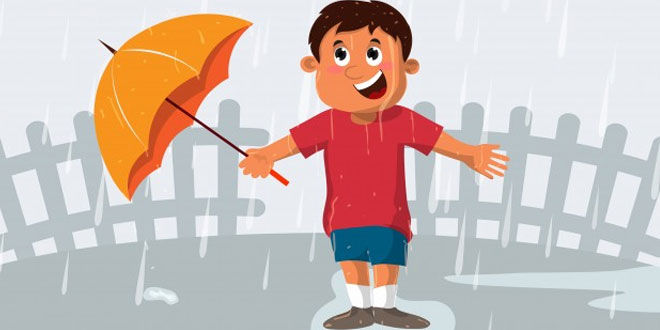Question: Explain the factors affecting India’s climate.
Answer:
- Latitude: The Tropic of Cancer passes through the middle of the country from the Rann of Kutch in the west to Mizoram in the east. Almost half of the country, lying south of the Tropic of Cancer, belongs to the tropical area. All the remaining area, north of the Tropic, lies in the sub-tropic. Therefore, India’s climate has characteristics of tropical as well as subtropical climates.
- Altitude: India has mountains to the north which have an average height of about 6,000 metres. India also has a.vast coastal area where the maximum elevation i% about 30 metres. The Himalayas prevent the cold winds from Central Asia from entering the subcontinent. It is because of these mountains that this subcontinent experiences comparatively milder winters as compared to central Asia.
- Pressure and Winds: The pressure and wind conditions over India are unique. During winter, there is a high-pressure area north of the Himalayas. Cold dry winds blow from this region to the low-pressure areas over the oceans to the south. In summer, a low-pressure area develops over interior Asia as well as over northwestern India. This causes a complete reversal of the direction of winds during summer. Air moves from the high-pressure area over the southern Indian Ocean, in a south¬easterly direction, crosses the equator, and turns right towards the low-pressure areas over the Indian subcontinent. These are known as the Southwest Monsoon winds. These winds blow over the warm oceans, gather moisture and bring widespread rainfall over the mainland of India.
Question: Mention any three characteristics of the Monsoon.
Answer:
- The Monsoons are pulsating in nature.
- These are affected by different atmospheric conditions prevailing in the region.
- The duration of the monsoon is between 100 – 120 days.
Question: Explain development of Monsoon Trough and its influence over rainfall distribution.
Answer:
- It is a region of low atmospheric pressure which develops because of excessive heat.
- It brings a remarkable change in rainfall pattern.
- It is responsible for die and wet spells of monsoon.
Questions.6. Give reasons as to why:
- Seasonal reversal of wind direction takes place over the Indian subcontinent.
- The bulk rainfall in India is concentrated over a few months.
- The Tamil Nadu coast receives winter rainfall.
- The delta region of the eastern coast is frequently struck by cyclones.
- Parts of Rajasthan, Gujarat and the leeward side of the Western Ghats are drought prone.
Answer:
- (i) During winter, there is a high pressure area over north of the Himalayas. Whereas, there is low pressure area over the ocean to the south. So cold and dry winds blow from the Himalayan region towards the ocean.
(ii) During summer, a low pressure area develops over the interior, Asia as well %is over the Northwestern India. This causes a complete reversal of the direction of winds during summer. - (i) Most parts of India receive rainfall from the south-west monsoons which blow in India only between June to September.
(ii) Only the eastern coast of India receives some rainfall from the North-East trade winds during the cold weather season. - It is because Tamil Nadu gets rain from the north-east monsoons which reach there after passing over the Bay of Bengal, after picking moisture from there.
- (i) In the mid-October, the mercury begins to fall at a rapid speed in Northern India.
(ii) The low pressure conditions of the North shifts to the Bay of Bengal by November. This shift causes cyclonic depressions in the Andaman Sea.
(iii) These cyclonic depressions give rise to tropical cyclones which cause heavy and widespread rains in the deltas of the Godavari, the Krishna and the Kaveri. - (i) Rajasthan does not receive much rain because the Aravalli Range which lies parallel to the direction of the winds and hence condensation does not occur.
(ii) Gujarat receives less rainfall because there are no hills and mountain ranges.
The leeward side of the Western Ghats receives less rainfall because when air descends, it gets warmed up. Due to its rising temperature, the relative, humidity of air decreases, and the air turns from a saturated state to an unsaturated state. Due to his fact, no rainfall occurs on the leeward side.
 Class Notes NCERT Solutions for CBSE Students
Class Notes NCERT Solutions for CBSE Students



